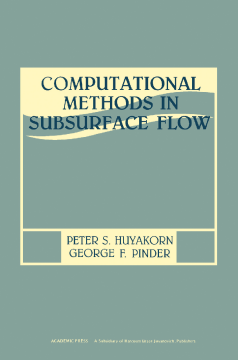
Additional Information
Book Details
Abstract
Computational Methods in Subsurface Flow explores the application of all of the commonly encountered computational methods to subsurface problems. Among the problems considered in this book are groundwater flow and contaminant transport; moisture movement in variably saturated soils; land subsidence and similar flow and deformation processes in soil and rock mechanics; and oil and geothermal reservoir engineering.
This book is organized into 10 chapters and begins with an introduction to partial differential and various solution approaches used in subsurface flow. The discussion then shifts to the fundamental theory of the finite element method, with emphasis on the Galerkin finite element method and how it can be used to solve a wide range of subsurface problems. The subjects treated range from simple problems of saturated groundwater flow to more complex ones of moisture movement and multiphase flow in petroleum reservoirs. The chapters that follow focus on fluid flow and mechanical deformation of conventional and fractured porous media; point and subdomain collocation techniques and the boundary element technique; and the applications of finite difference techniques to single- and multiphase flow and solute transport. The final chapter is devoted to other alternative numerical methods that are based on combinations of the standard finite difference approach and classical mathematics.
This book is intended for senior undergraduate and graduate students in geoscience and engineering, as well as for professional groundwater hydrologists, engineers, and research scientists who want to solve or model subsurface problems using numerical techniques.
